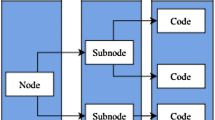Abstract
The law and regulation of electronic communications in the United States (Us) is fragmented, overlapping, and controversial, with overarching First Amendment limitations for government action directed toward content. Because the law was written for “legacy” systems of telecommunications without regard for the present convergence of the industry and media, there are different laws, different administrative oversight, and sometimes conflicting legislative policies depending on the delivery mechanism and media. Because of this complexity, this article focuses on content regulation of internet communications broadly defined, how it impacts providers of telecommunications, and conversely how the private actions of providers impact content regulation. We begin with a discussion of the First Amendment to the United States Constitution, as it is essential to an understanding of the limitations to federal regulation. Then, federal statutory attempts to regulate internet content are examined followed by a discussion of the applicable administrative law. The last section of the article describes how private entities have filled in the gap in the absence of government regulation by private terms of use, and in conclusion compares this approach to other regulatory mechanisms.
Résumé
Aux Etats-Unis, les lois et réglementations sur les communications électroniques sont fragmentées, se chevauchent, sont sujettes à controverse, et sont soumises aux limitations fondamentales du Premier Amendement pour toute mesure gouvernementale sur les contenus. La loi a été écrite pour des systèmes traditionnels de télécommunication sans considérer la convergence actuelle entre l’industrie et les médias. Le résultat est l’existence de lois différentes, de supervisions administratives différentes, et parfois de politiques législatives contradictoires selon les mécanismes de distribution et les médias. En raison de cette complexité, cet article insiste sur la réglementation du contenu des communications par l’Internet (définies de façon large), la manière dont elle affecte les fournisseurs de télécommunication, et comment, à leur tour, les actions des fournisseurs affectent la réglementation des contenus. Nous commençons par une discussion du Premier Amendement à la Constitution des Etats-Unis, car il est essentiel à la compréhension des limitations à la réglementation fédérale. Ensuite, nous examinons les tentatives fédérales pour réglementer le contenu de l’Internet et nous discutons les textes administratifs qui s’appliquent. La dernière partie de cet article décrit comment des entités privées ont compensé le manque de réglementation gouvernementale en établissant des conditions d’utilisation privées et conclut en comparant cette approche à d’autres mécanismes de régulation.
Similar content being viewed by others
References
Breckheimer (P.), A Haven for Hate: The Foreign and Domestic Implications Of Protecting Internet Hate Speech Under The First Amendment,75 S. Cal. L. Rev. 1493 (2002).
Kesan (J.), Gallo (A.), Optimizing Regulation of Electronic Commerce,72 U. Cin. L. Rev. 1497, 1557-58 (2004).
Aronowitz (S.), Brand X Internet Services v.Fcc: The Case of the Missing Policy Argument,20 Berkely Tech. L. J. 887 (2005).
Reiter (H.), The Contrasting Policies of theFfc & ferc Regarding the Importance of Open Transmission Networks in Downstream Competitive Markets,57 Fed. Comm. L. J. 243 (2005).
Casey (T.), Magenau (J.), A Hybrid Model of Self-Regulation and Governmental Regulation of Electronic Commerce,19 Santa Clara Computer & High Tech. L. J. 1, 9 (2002).
Gonzalez (O.), Regulating Objectionable Content in Multimedia Platform: Will Convergence Require a Balance of Responsibilities Between Senders and Receivers?,20 Santa Clara Computer & High Tech. L. J. 609, 617–19 (2004).
Hiller (J.),Cohen (R.), Internet Law and Policy,Prentice Hall (2002).
Cannataci (J.), Bonnici (J.), Can Self-regulation Satisfy the Transnational Requisite of Successful Internet Regulation?17 Int’l Rev. L. Comp. & Tech. 51 (2003).
Zynda (T.), Ticketmaster Corp. v. Tickets.com, Inc.: Preserving Minimum Requirements of Contract on the Internet,19 Berkeley Tech. L. J. 495 (2004).
di Bari (J.), A Survey of the Internet Jurisdiction Universe,18 N. Y. Int’l L. Rev. 123 (2005).
Albritton (M.), Swatting Spiders: An Analysis of Spider Activity on the Internet,3 Tul. J. Tech. & Intell. Prop. 137 (2001).
Cohen (R.),Hiller (J.), Towards Theory of CyberPlace, A Proposal for a New Legal Framework,10 Richmond J. of L. & Tech, Fall (2003).
Bellia (P.), Defending Cyberproperty,79 N.Y.U. L. Rev. 2164 (2004).
Zhang (L.), The can-spam Act: An Insufficient Response to the Growing Spam Problem,20 Berkeley Tech. L. J. 301 (2005).
Johnson (D.), David Post (D.), Law and Borders-The Rise of Law in Cyberspace,48 Stan. L. Rev. 1367 (1996).
Lessig (L.), Code & Other Laws of Cyberspace,Basic books, 1st edition (1999).
Author information
Authors and Affiliations
Additional information
Janine S.Hiller is a Professor of Business Law at Virginia Tech, where she served as the founding Director of the Center for Global Electronic Commerce, and one year as Associate Dean for Graduate and International Programs. She is coauthor, with Ronnie Cohen, of the book Internet Law and Policy (Prentice-Hall Publisher, 2002). She is an active researcher in the area of Internet law and a member of several American Bar Association committees relating to cyberlaw.
RonnieCohenis a professor of Business Law at Christopher Newport University in Virginia. She is the author, with Janine Hiller, of the book Internet Law and Policy (Prentice-Hall Publisher, 2002). She has published several articles in the area of online communications. She is a member and past officer of the Technology Section of the Academy of Legal Studies in Business
Rights and permissions
About this article
Cite this article
Hiller, J.S., Cohen, R. Internet content regulation: what method?. Ann. Télécommun. 61, 830–846 (2006). https://doi.org/10.1007/BF03219867
Received:
Accepted:
Issue Date:
DOI: https://doi.org/10.1007/BF03219867
Key words
- Regulation
- Internet
- United States
- Legislation
- Communication law
- Public administration
- Internet service provider



